Learn how the hieroglyphs were identified and deciphered.
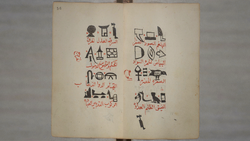
The long-desired fulffiled knowledge occult alphabets, attributed to Ibn Wahshiyya
Between the 5th century CE and the Renaissance, knowledge of hieroglyphs was entirely lost.
Many enthusiasts tackled the challenge of deciphering the language, with little success. Some groundwork was made with various researchers identifying names and some grammatical structure, and confirming that cartouches were markers for royal names.
They were still missing a critical piece of information that would eventually be revealed thanks to the discovery of the Rosetta Stone.
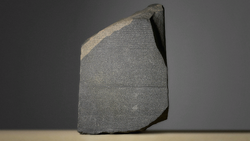
Rosetta Stone / Ptolemaic Era
The Rosetta Stone was found in 1799 by Bouchard, a soldier in Napoleon's army.
The stela dates from 196 BCE. Written in ancient Egyptian and Greek with three scripts: hieroglyphics, demotic and Greek alphabet.
Following the defeat of Napoleon Bonaparte in 1801, the English took possession of the stone. It has been at the British Museum since 1802, and remains the most-visited object of the museum to date.
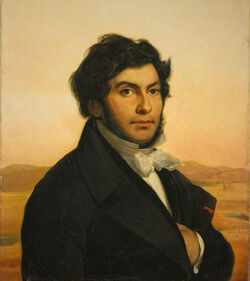
Portrait of Jean-François Champollion, Egyptologist
The first translation was of the Greek section only, in 1803. It detailed a decree of Pharaoh Ptolemy V, reminding the citizens that their pharaoh had led Egypt to prosperity.
It was fully translated twenty years after by Jean-François Champollion, who was working with a facsimile.
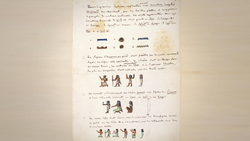
"La Grammaire egyptienne" Autograph manuscript by Champollion
Through his studies of the Stone, Champollion was able to make a critical observation that would unlock the whole mystery. That hieroglyphics were not only ideograms but also phonograms.
Hieroglyphs consist of phonetic glyphs, single characters and logograms. Essentially, they are a combination of phoneties, alphabet and fullwords which in total form a language.
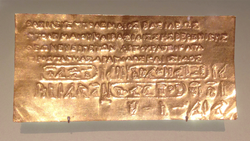
Foundation plague from the Serapeum in Alexandria, showing the Greek and Egyptian inscriptions
While studying the stone, Champollion realized that there was a difference in the number of hieroglyphic characters in relation to the number of Greek characters for the same word. This led him to believe that hieroglyphs must have phonetic characteristics.
This was the first step to unlocking the Rosetta Stone's secrets.
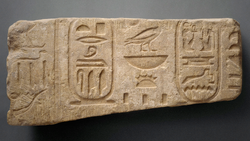
Inscription fragment of Ptolemy I's cartouches
To prove this theory, Champollion began identifying Egyptian rulers' names, and then compared their phonetic pronunciation to the Greek version.
For example, Kheops had been the Greek name given by ancient chroniclers to the owner of the Great Pyramid, Khufu.

Temple of Iset, Island of Philae / circa 1880
The next step for Champollion was to confirm that his approach was verifiable, by using the Philae obelisk as an additional reference.
Engraved in the obelisk are two inscriptions in Egyptian hieroglyphs and Greek. Once he confirmed the names of Ptolemy and Cleopatra within these texts, and confirmed the same phonetic patterns as on the Rosetta stone, Champollion knew he was on the right track.
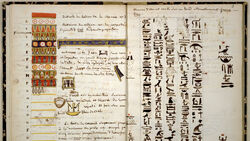
"La Grammaire égyptienne" Autograph manuscript by Champollion
Champollion had already mastered several ancient languages when he took on deciphering the Rosetta Stone. He used his knowledge of Coptic to identify the solar disk hieroglyph on the obelisk as the phonetic translation of Ra.
Further translation only strengthened his conclusion. Egyptian hieroglyphs encompassed the alphabet in both phonetics and determinative ways, which means that the symbol represents the word itself.
